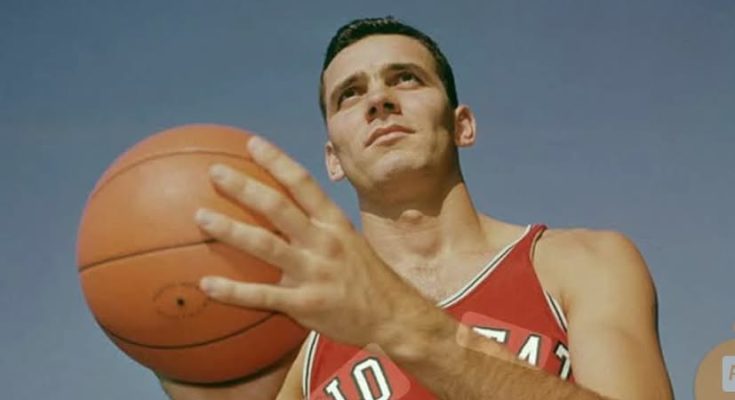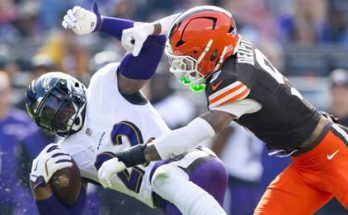Jerry Lucas wasn’t just a player — he was a phenom. He was the kind of transcendent figure who comes along once in a generation, redefining the standards for what excellence looks like on the basketball court. In an era before social media, before highlight reels could instantly elevate college athletes to household names, Lucas earned national reverence the old-fashioned way — through dominance, discipline, and a basketball IQ so advanced it bordered on clairvoyant. As the linchpin of Ohio State’s legendary 1960 NCAA championship team, Lucas etched his name into the history books not merely as a star player, but as the intellectual and emotional nucleus of one of college basketball’s all-time great squads.
Born in Middletown, Ohio, in 1940, Lucas had already gained national fame before stepping foot on the Ohio State campus. As a high school star, his talents drew widespread attention and he was pursued by nearly every major program in the country. But his decision to attend Ohio State changed not just his life, but the trajectory of college basketball. Teaming up with future legends like John Havlicek and under the guidance of Hall of Fame coach Fred Taylor, Lucas became the cornerstone of a team that revolutionized how the game was played in the NCAA ranks.
Lucas’s presence on the court was a masterclass in versatility and intelligence. Standing at 6-foot-8, he was technically a big man, but labeling him as merely a center or forward would be reductive. Lucas was a true point-forward long before the term existed. He had an uncanny ability to see plays develop before they happened, and whether it was through an outlet pass that launched a fast break or a quick bounce pass that split defenders in the post, Lucas played like a coach on the floor. His court vision and awareness gave Ohio State an edge that went beyond size or speed. Every possession that involved Lucas had a purpose, and every movement was calibrated for efficiency and effectiveness.
What separated Lucas from other stars of his time wasn’t just his skillset — it was his devotion to excellence in every conceivable aspect of the game. He studied film like a professor reviewing academic texts. He memorized opponents’ tendencies and knew precisely where every player would be on the floor at any given moment. Basketball wasn’t just a sport to Lucas; it was a science and an art form, and he was both a mathematician and a painter. His analytical mind made him seem almost prophetic in anticipating rebounds, passes, and angles. There’s a reason he led the nation in field-goal percentage for three straight seasons — his shot selection, timing, and decision-making bordered on perfection.
During the 1959–60 season, Lucas was nothing short of dominant. He averaged 26.3 points and 16.4 rebounds per game, numbers that are staggering even by today’s standards. But to truly understand his value, one had to witness the intangible qualities he brought to Ohio State. His leadership was quiet but commanding. He didn’t need to bark instructions or dominate huddles. His presence alone inspired teammates to raise their level of play. Lucas had a way of making his teammates better, not just by delivering timely passes or grabbing crucial rebounds, but by elevating the collective basketball IQ of everyone on the court.
The 1960 NCAA Tournament was Lucas’s masterpiece. Ohio State stormed through the tournament field, defeating Western Kentucky, Georgia Tech, and NYU before dismantling a formidable California squad in the championship game. Lucas poured in 16 points and snatched 10 rebounds in the title game despite facing constant double teams and physical defenses designed to wear him down. But his contributions weren’t limited to the box score. His understanding of spacing, angles, and momentum control was evident in every phase of the game. He orchestrated Ohio State’s offense with a surgeon’s precision and protected the rim like a sentinel guarding a fortress. For his efforts, Lucas was named the tournament’s Most Outstanding Player, a fitting accolade for someone who had elevated not just his own game, but the identity of the entire program.
What makes Lucas’s college legacy even more remarkable is how his academic discipline mirrored his athletic excellence. A straight-A student and Academic All-American, Lucas didn’t just preach discipline — he lived it. He brought the same meticulous attention to his studies that he did to film breakdowns and game preparation. That dual commitment to intellect and athleticism made him a role model long before NIL deals and media campaigns turned college stars into brands. Lucas embodied the very ideal of a student-athlete, and in doing so, he gave Ohio State a foundation of integrity, character, and intellect that remains a point of pride for the university to this day.
In a sport where ego can sometimes eclipse the essence of team play, Lucas was the ultimate unifier. He deferred when necessary, attacked when required, and defended with relentless energy regardless of the opponent. His mental toughness was unshakable, and his emotional intelligence was a rare gift that allowed him to lead without alienating, to correct without condescending. Those qualities made him beloved by coaches, revered by teammates, and respected by opponents.
Even after his college days were over, Lucas’s legacy continued to grow. He went on to win a gold medal in the 1960 Olympics with Team USA — a squad that many historians consider the greatest amateur basketball team ever assembled, featuring names like Oscar Robertson, Jerry West, and Walt Bellamy. Lucas fit right in among these luminaries, again proving his basketball brilliance on the world stage.
When he eventually entered the NBA, Lucas brought his cerebral approach to professional basketball and found immediate success. He was named Rookie of the Year and became a perennial All-Star, even winning an NBA championship with the New York Knicks in 1973. But for all his accomplishments at the pro level, it was his college years at Ohio State that defined the core of his legend. That 1960 championship team was a perfect storm of talent, coaching, and chemistry — and Lucas was the eye of that storm, calm, calculated, and commanding.
Today, when conversations about the greatest college basketball players of all time arise, Jerry Lucas’s name doesn’t always come up first, but it absolutely should. His statistical dominance is well-documented, but numbers alone can’t capture what he brought to the court. Lucas changed how the game was played — not with flash or flair, but with a rare blend of mind and muscle. He was a player who thought three moves ahead, who studied the physics of bank shots and mastered the geometry of passing lanes. He understood that winning wasn’t just about scoring more points, but about minimizing mistakes, maximizing team effort, and playing the game the right way.



